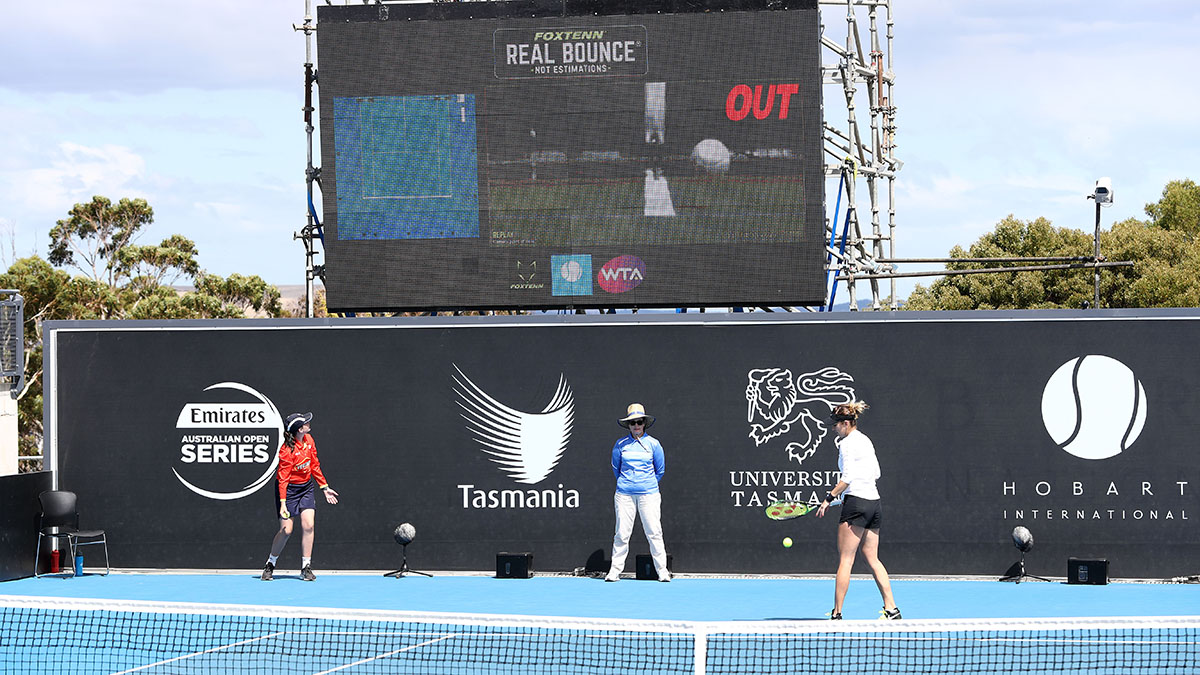ATP Next Gen Finals provides opportunity for tennis innovation

The ATP Next Gen Finals have been a bastion of innovation in the tennis world for the past few years. This season, the tournament will test a number of new rules, most notable among them: the use of wearable technology for the first time during ATP tournament play.

Tennis players and athletes in other sports have slowly introduced technology into their training regimen, but the Next Gen tournament is their first opportunity to wear data trackers during a live match.
“From the outset, the Next Gen ATP Finals have been at the cutting edge of innovation in our sport, and the use of wearable technology this year during matches will provide some valuable insights to players, coaches and ATP medical services,” Chris Kermode, ATP Executive Chairman & President, said in an ATP press release. “This is a unique tournament that has always embraced new technologies, and this is the latest step as the event continues to pioneer innovation in the game.”
According to the ATP, the GPS device will be able to track metrics like acceleration, force and heart rate. And the information will be available to coaches and players after matches and practices.
Other innovations from the Next Gen Finals
In-match coaching has been a contentious issue at Grand Slam events over the past couple of years, highlighted by the incident with Serena Williams during the US Open final in 2018.
Coaching has been allowed during regular-season WTA tour events since 2008, though. During those matches, coaches are allowed to come onto the court once a set to advise players. And on-court coaching is an integral — and legal — part of high school, college, USTA league and Davis Cup matches.
The ATP currently does not have a similar rule, but it is experimenting with on-court coaching during this year’s Next Gen Finals. Players will be allowed to talk to their coach via a headset during changeovers. The interactions are recorded, but not broadcast during the match.
Another innovation that came from the Next Gen Finals is the 25-second shot clock. The server has 25 seconds from the end of one point to initiate the next point, otherwise he or she incurs a time violation. It was introduced at the Next Gen Finals in 2017 and became part of Grand Slam tennis at the 2018 US Open.
Not all players enjoy this particular innovation, though. Rafael Nadal has been a vocal opponent of the change.
“All the matches that have been important in the history of our sport have been four hours, five hours long,” Nadal said in a press conference during Wimbledon 2018. “To play these kind of matches, you need time between points because you cannot play points in a row with long rallies, with emotional points, having only 25 seconds between points.”
There are no line judges at the Next Gen Finals either. The tournament began using Hawk-Eye technology to make line calls in 2017. Hawk-Eye has the ability to make instantaneous out calls, but the players do have the ability to initiate a video review.
The ATP also made an adjustment to one of the most consistent parts of tennis. The sets were shortened from six games to four games. That allows for best-of-five-set matches instead of the best-of-three-set matches played on the ATP tour.
Each game is played with no-ad scoring. That means that when a game is 40-40, the player who wins the next point wins the set. Games are also played without lets. So every serve that lands in must be played, even if the ball strikes the net first. NCAA tennis matches are played with both of those rules, but traditional, professional matches are played with “ad” and lets.
What is the ATP Next Gen Finals?
This tournament, which began in 2017, features the eight best players 21-and-under on the ATP tour. It is equivalent to the year-end Nitto ATP Finals for young players of the game.
This year’s tournament will take place Nov. 5-9 at The Allianz Cloud, a stadium in Milan, Italy, thanks to a partnership with the Italian Tennis Federation and the Italian National Olympic Committee.
It’s played in a round-robin format with eight players split into two groups. The top two players from each group advance to the semifinal round.
In 2018, the top seed, Stefanos Tsitsipas, completed an undefeated run to the title. During the 2019 season he won two titles, at Estoril and Marseille, and is currently ranked No. 6 in the world.
This year, the tournament will feature Alex deMinaur (Australia), Frances Tiafoe (USA), Ugo Humbert (France), Casper Ruud (Norway), Miomir Kecmanovic (Serbia), Mikael Ymer (Sweden), Alejandro Davidovich Fokina (Spain) and Jannik Sinner (Italy).
Sarah Farrell is a graduate student studying sports journalism at Arizona State University
Related Articles
Tennis players embracing technology, analytics in their training

